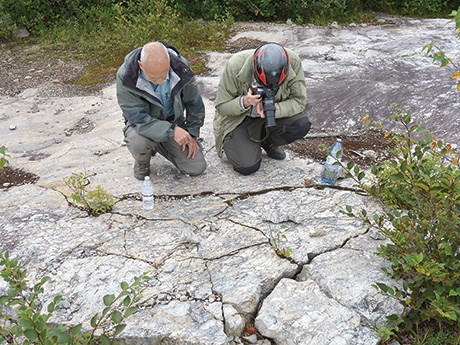R&D group aims to speed the development and testing of key battery materials and components
With global demand for lithium-ion batteries and component minerals skyrocketing, the National Research Council (NRC) of Canada is spurring Canadian involvement in this booming industry.
The market for lithium-ion batteries in consumer electronics, automobiles and grid-level storage for renewable energy could reach $145 billion over the next eight years while annual demand for graphite, used to produce anodes for these batteries, is expected to triple to 250,000 tonnes by 2020, the NRC estimates.
Canada has many of the key ingredients to be a major player in this industry. With North America’s largest deposits of flake graphite, it has the potential to become a global supplier. Canada’s biggest strength is in research and development. “We have a lot of good brains,” said Éric Baril, program leader for vehicle propulsion technology at the NRC. “On the academic side, we have had a lot of breakthroughs.”
Hydro Quebec, for example, has been selling licences around the world for technology it developed, Baril said. “They have a couple of projects right now on battery development for grid level storage.”
At Dalhousie University in Nova Scotia, the Jeff Dahn Research Group has a five-year partnership with Tesla Motors/Energy to increase the energy density of lithium-ion batteries, extend their longevity and lower costs. Formerly with the National Research Council, Dahn is considered one of the pioneer developers of the lithium-ion battery used in cellphones and laptop computers.
The NRC is flexing Canada’s intellectual strength to enhance the industry with the launch of LiBTec, a research and development group to speed the development and testing of key battery materials and components. “So far, we’ve had a pretty good reception, especially on the graphite industry side because there are a lot of graphite projects all around Canada,” said Baril.
In its first phase, LiBTec will work to develop and analyze product specifications for anode components and to standardize component materials. With state-of-the-art equipment for battery development, the NRC has the ability to evaluate and test battery materials. It is expanding capabilities to include a new battery test facility in Ottawa this year and expects to have a battery manufacturing line in Boucherville and London early next year.
“What we’re looking at is the second generation of anode projects, which require better shapes, better products but also integration of silicon to the graphite to enhance the capacity of the anode,” said Baril. “This upgrade with silicon has to be done by secondary transformation and this is the type of knowledge and intellectual property that will be developed.”
The NRC aims to assemble a group of companies interested in bringing these products to market while sharing the risks and costs, Baril explained. “What we want to establish in the group is a link between the battery manufacturers and the product developers.”
A second phase of work will focus on lithium-iron battery cathodes. Made of lithium and a combination of metals such as cobalt, nickel, aluminum and manganese, cathodes require high-purity lithium. Although several companies are working to exploit promising lithium deposits and establish processing plants, Canada currently has no producing lithium mines.
When Tesla Motors announced plans for its Gigafactory to produce batteries in Nevada, it sparked a claims staking rush, mostly by Canadians, around North America’s only operating lithium mine in Nevada.
Tesla’s battery factory is expected to need 110,000 tonnes of graphite, 75,000 tonnes of lithium and 21,000 tonnes of cobalt annually – enough, according to the NRC, to reshape the battery raw materials industry. LiBTec aims to prepare Canada’s lithium-ion battery supply chain for that demand.
The NRC has been approaching and consulting various stakeholders with the goal of having 10 to 15 industrial partners in LiBTec by the end of the summer. Each partner is expected to contribute $18,000 annually for four years.
Northern Ontario hosts several promising graphite and lithium deposits, including Zenyatta Ventures’ Albany graphite project near Hearst and Avalon Advanced Materials’ Separation Rapids lithium project near Kenora.


